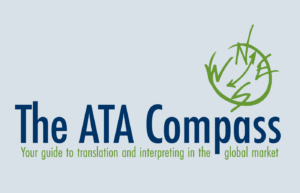Transcreation: Translating and Recreating
Sometimes translating a text isn’t enough: you need more than just a copy of the original text in another language, you need a text that is specifically aimed at your target audience and takes into account their different cultural background. This is when you need to have your text “transcreated” (or “adapted”) rather than simply having it translated. But what is transcreation?
Transcreation basically means recreating a text for the target audience, in other words “translating” and “recreating” the text. Hence the term “transcreation”. Transcreation is used to make sure that the transcreated text is the same as the original text in every aspect: the message it conveys, the style, the images and emotions it evokes and its cultural background. You could say that transcreation is to translation what copywriting is to writing.
Obviously, a good translation should always try to reflect all these aspects of the original text, but some types of texts require a higher level of transcreation than others. A technical text, for example, usually doesn’t contain many emotions and cultural references and its linguistic style is probably not very challenging. However, marketing and advertising copy, which is the type of copy to which the term transcreation is usually applied, does contain all these different aspects, making it difficult to create a direct translation. Translating these texts therefore requires a lot of creativity.
What skills should you look for?
So what skills should you look for when you have a text that needs to be transcreated? In addition to creativity, transcreators should also have an excellent knowledge of both the original language and the language they transcreate into, plus a thorough knowledge of cultural backgrounds. This is important because the transcreator needs to recognize the tone of voice of the original text and reproduce it in their transcreation. And sometimes the tone of voice or any jokes or puns used may not be suitable for the target audience, in which case the transcreator should be able to adapt them. The transcreator should also be familiar with the product being advertised and be able to write about it enthusiastically.
Which texts are better transcreated rather than translated?
Transcreation is mostly used for marketing and advertising copy. This basically includes any text that you use to sell your products or brand: think of anything from websites, brochures and TV and radio commercials aimed at your clients, to posters and flyers for your resellers.
How do you choose the right transcreation?
As it will be hard for you as a client to judge transcreations in languages you don’t understand, transcreators will typically provide a so-called back translation, a literal translation of their transcreation in your own language. This will give you an idea of what the transcreation sounds like in the other language and how the transcreator has solved any puns and other difficulties in the original text. You will also usually be given alternative transcreations, so you can choose which one you think is the best fit. After all, you know your product best. A transcreator can also provide cultural advice, for example when a specific translation or image does not work for the target audience.
By Percy Balemans
About the Author
Percy Balemans is an English to Dutch and German to Dutch translator specializing in advertising material (transcreation), fashion, art, travel and tourism, journalism, and human rights.
2 Comments
Leave a Comment Cancel Reply
Language Services Directory
Subscribe to The ATA Compass
Connect with The ATA Compass
Recent Posts
Language Services Directory
Start Your Search ATA’s Language Services Directory includes a list of all ATA members of individuals, as well as companies. Need help finding the right professional? Professional translators and interpreters…
Read MoreTranslator vs. Interpreter
Watch a Day in the Life of Translators and Interpreters See how translators and interpreters work in this short animated video. Translators do the writing Translators work with the written…
Read MoreWhat is a Certified Translation?
What are the basics of a certified translation? In the United States, anyone can certify a translation. A translator does not need to be certified in order to provide a…
Read MoreThe ATA Compass
Want to reach more customers, grow your business, and improve your bottom line? The ATA Compass publishes articles and provides resources to show you how language professionals can help you…
Read MoreBuying Language Services
Guide to Buying Translation Services Translators help power the global economy, working with businesses, governments, non-profits and individuals. Translators work with the written word. The ATA Guide to Buying Translation…
Read MoreClient Assistance
Can I afford to hire a professional? You can’t afford NOT to. Poor translation and interpreting services can be disastrous for your business. See what’s at stake. Learn More What’s…
Read More







[…] http://theatacompass.org/2013/08/28/transcreation-translating-and-recreating/ […]
Translators vs transcreator…what is the difference? There seems to be an identity to each profession but also a confusion as to who does what type of work and when do individuals or companies know which to hire? I have seen many, many descriptions of marketing translations being filled by translators. Is this the best resource or would a transcreator be a better fit? Businesses need to better educate their decision makers on these differentiations as they play a key role in the assets being built in text creation.